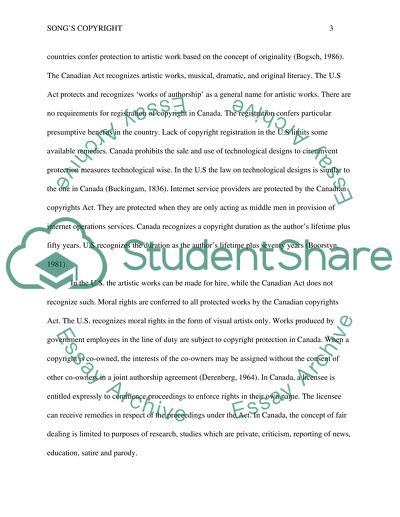Cite this document
(Copyrights in the Music Industry: Exclusive Legal Rights Assignment Example | Topics and Well Written Essays - 1500 words, n.d.)
Copyrights in the Music Industry: Exclusive Legal Rights Assignment Example | Topics and Well Written Essays - 1500 words. https://studentshare.org/law/1634976-songs-copyright
Copyrights in the Music Industry: Exclusive Legal Rights Assignment Example | Topics and Well Written Essays - 1500 words. https://studentshare.org/law/1634976-songs-copyright
(Copyrights in the Music Industry: Exclusive Legal Rights Assignment Example | Topics and Well Written Essays - 1500 Words)
Copyrights in the Music Industry: Exclusive Legal Rights Assignment Example | Topics and Well Written Essays - 1500 Words. https://studentshare.org/law/1634976-songs-copyright.
Copyrights in the Music Industry: Exclusive Legal Rights Assignment Example | Topics and Well Written Essays - 1500 Words. https://studentshare.org/law/1634976-songs-copyright.
“Copyrights in the Music Industry: Exclusive Legal Rights Assignment Example | Topics and Well Written Essays - 1500 Words”. https://studentshare.org/law/1634976-songs-copyright.


